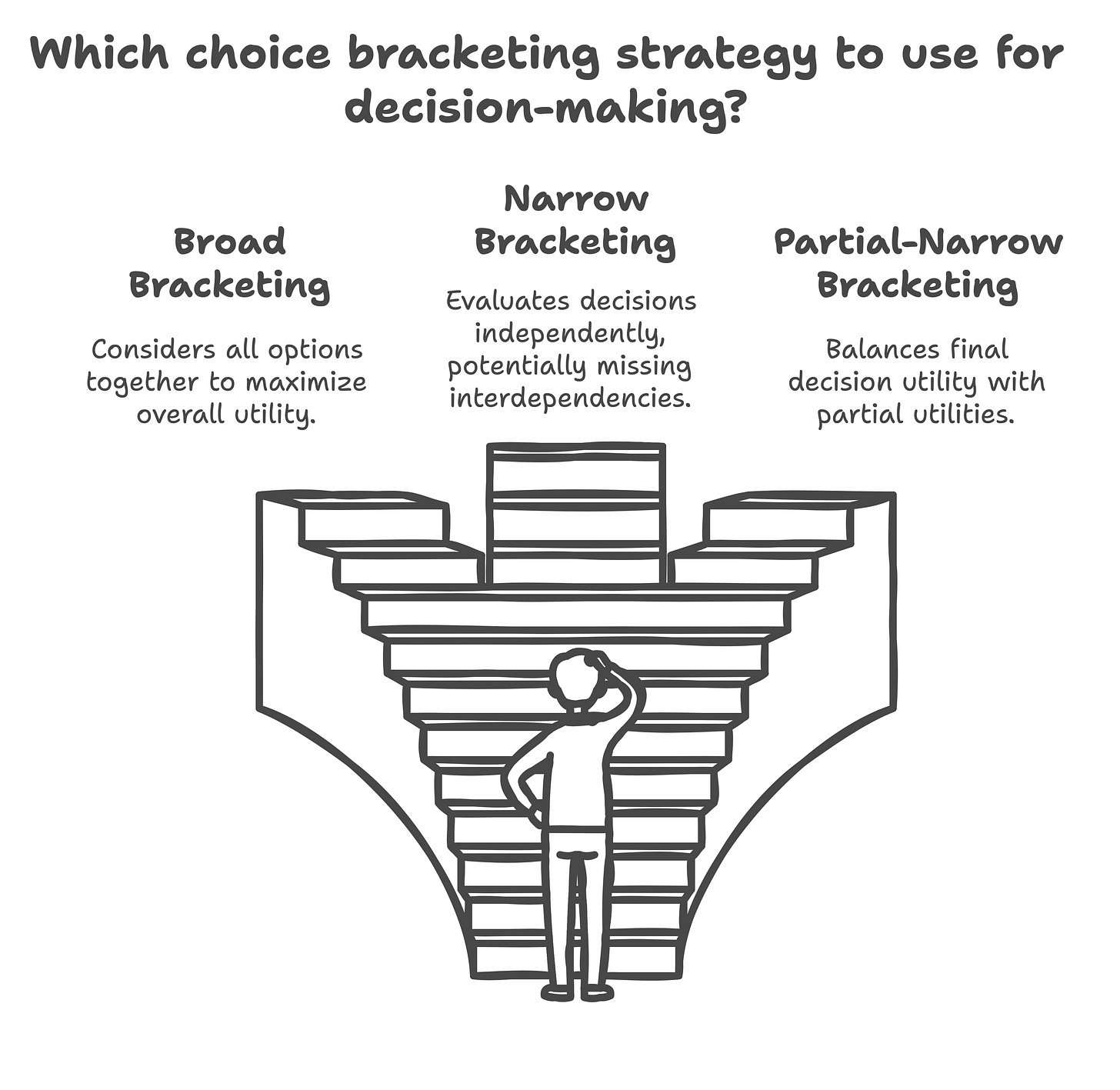Atomic Knowledge #9: Choice Bracketing
Choice Bracketing is a framework that highlights how the structure and context of decisions shape outcomes.
⏱️ Reading Time ≈ 1 min
Choice bracketing is the cognitive process of grouping decisions either collectively (broad) or in isolation (narrow), shaping how choices are evaluated and outcomes determined. Broad bracketing optimizes objectives by evaluating multiple decisions together, while narrow bracketing simplifies cognitive effort but risks overlooking interdependencies. Bracketing operates across two dimensions: temporal framing and choice grouping. Temporal bracketing influences how choices are evaluated over time: daily decisions viewed in isolation may encourage shortsighted behavior, while grouping them promotes alignment with long-term goals. Choice grouping refers to how options are presented or aggregated, influencing perceptions of costs and benefits. Marketing strategies often exploit narrow bracketing through fragmented pricing schemes, such as “penny-a-day” campaigns, making costs seem less significant when evaluated in isolation. By influencing perceptions, bracketing has profound impact on rational decision-making. Choice bracketing offers a vital framework for understanding how decision structures influence outcomes. Balancing cognitive simplicity with a broader perspective enables more effective, interconnected decision-making.
Make the most of it! Until next time, S.
Deepen Your Knowledge
Ding, 2012 - Experimental Evidence on Choice Bracketing in a Mini-Trust Game (paper)
Ellis, Freeman, 2024 - Revealing Choice Bracketing (paper)
Read, Loewenstein, Rabin, 1999 - Choice Bracketing (paper)
Thaler, 1985 - Mental Accounting and Consumer Choice (paper)
Tversky, Kahneman, 1981 - The Framing of Decisions and the Psychology of Choice (paper)
Webb, Shu, 2017 - Is broad bracketing always better? (paper)
Previously on Atomic Knowledge
Disclaimer: whenever I encounter an interesting concept—whether it’s a theory, speculative idea, formula, or law—I strive to deeply understand it and see how it connects within my knowledge network. Once I’ve grasped its essence, I distill it into a concise, no-frills note: simple, atomic, and memorable. To keep things sharp and focused, I stick to a “lazy” limit of 1,000 characters, give or take. These atomic notes, often described as mental models, have revolutionized how I understand and link ideas, fostering a more organic and interconnected expertise. Believing in the power of sharing, I’ve decided to make them public. Think of these notes as tools: mental models to keep in your back pocket for quick use or prompts to deepen your understanding when inspiration strikes. Subscribe if you’re curious—you won’t want to miss them.










